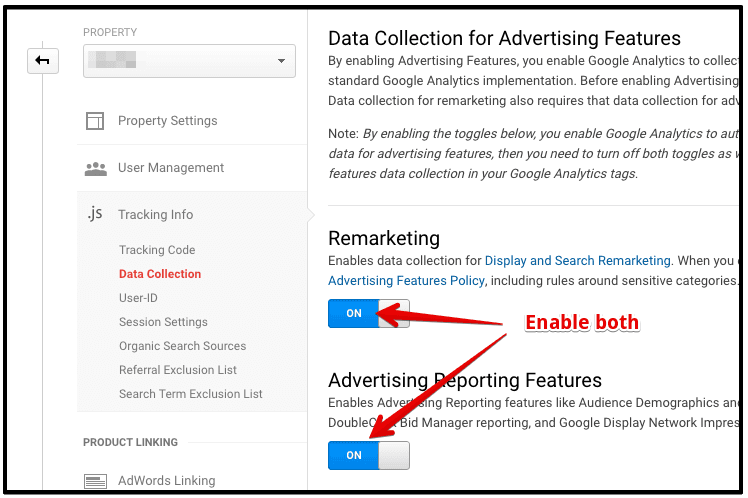Using Remarketing in Google Analytics: A Comprehensive Guide
Utilizing remarketing in Google Analytics offers organizations a critical edge in getting to out to possible clients. This overview will certainly shed light on the crucial actions entailed in utilizing the full capacity of remarketing in Google Analytics, leading to improved advertising outcomes.
Comprehending Remarketing in Google Analytics
Remarketing in Google Analytics allows companies to purposefully target users that have formerly communicated with their website or mobile application. By leveraging data from Google Analytics, companies can produce tailored remarketing listings based upon individual habits, such as web pages checked out, activities taken, or specific objectives attained. This effective tool enables organizations to re-engage with individuals who have shown interest in their solutions or items, ultimately raising the probability of conversion.
Recognizing the various kinds of remarketing techniques is essential for an effective project - What Is “Remarketing” In Google Analytics?. Google Analytics supplies different options, including typical remarketing, dynamic remarketing, and remarketing checklists for search ads (RLSA) Each type offers an one-of-a-kind function and can be customized to meet particular advertising and marketing purposes
Furthermore, evaluating the performance of remarketing campaigns is necessary for maximizing outcomes. Google Analytics gives beneficial insights right into the efficiency of various remarketing techniques, enabling services to make data-driven decisions and fine-tune their targeting approach. By continuously keeping track of and readjusting remarketing efforts based on analytics information, businesses can maximize ROI and drive success in their marketing initiatives.
Setting Up Remarketing Campaigns

After setting up audience lists, the next step is to connect Google Analytics with Google Ads. By connecting these 2 platforms, services can effortlessly transfer audience lists from Google Analytics to Google Advertisements for remarketing functions. This combination permits even more exact targeting and much better project efficiency.
When the accounts are connected, services can create remarketing projects in Google Ads utilizing the audience notes previously specified in Google Analytics. These campaigns can be tailored with specific advertisement creatives, messaging, and bidding strategies to effectively re-engage with previous site visitors and drive conversions. By adhering to these actions, find more companies can utilize the power of remarketing to enhance their marketing initiatives and boost ROI.
Utilizing Target Market Segmentation Approaches

Predefined sections in Google Analytics permit you to rapidly analyze usual audience groups fresh users, returning individuals, or users that completed a details goal on your internet site. Custom-made segments, on the various other hand, enable you to develop distinct sectors based on details requirements that are necessary to your service objectives. Dynamic remarketing checklists automatically change based on individual actions, showing tailored ads to customers who have connected with your site specifically methods.
Studying Remarketing Performance Metrics
Upon evaluating the effectiveness of remarketing projects in Google Analytics, the analysis of crucial efficiency metrics supplies useful understandings into target market involvement and conversion prices. By diving into metrics such as click-through rates (CTR), conversion prices, price per purchase (CERTIFIED PUBLIC ACCOUNTANT), and return on ad spend (ROAS), online marketers can gauge the success of Click Here their remarketing initiatives. Evaluating these metrics enables marketers to maximize projects, refine audience targeting, and allocate budgets efficiently to boost general remarketing performance.
Enhancing Remarketing Approaches
When refining remarketing approaches in Google Analytics, concentrating on target market division is vital for accomplishing campaign success. By separating your audience into details sectors based on their behavior, demographics, or passions, you can tailor your ads extra efficiently to each team. This targeted method increases the likelihood of engaging individuals who have currently shown passion in your product and services, resulting in greater conversion prices.
Another critical element of optimizing remarketing methods is continuously testing and refining your campaigns (What Is “Remarketing” In Google Analytics?). A/B screening different advertisement creatives, messaging, or deals can help you determine what resonates finest with your target market and drives the most conversions. By assessing the efficiency of these examinations in Google Analytics, you can make data-driven choices to enhance your remarketing initiatives further
Furthermore, leveraging dynamic remarketing can considerably improve your campaign results. This feature permits you to show tailored advertisements to users based on their past interactions with your website, showcasing service or products they have actually formerly seen. By providing customized content to users based on their actions and rate of interests, dynamic remarketing can help enhance interaction and drive conversions.
Conclusion
In verdict, harnessing remarketing in Google Analytics is a strategic strategy to target users that have previously engaged with a website. By developing customized audience listings and making use of target market segmentation techniques, services can maximize remarketing advocate increased conversion rates. Evaluating efficiency metrics and continually maximizing approaches are essential for optimizing the effectiveness of remarketing initiatives.
Google Analytics provides various choices, including typical remarketing, vibrant remarketing, and remarketing checklists for search advertisements (RLSA)After establishing up target market listings, the next action is to connect Google Analytics with Google Advertisements. By connecting these 2 platforms, services can seamlessly transfer audience listings from Google Analytics to Google Ads for remarketing functions.Once the accounts are connected, organizations can produce remarketing campaigns in Google Ads utilizing the target market notes previously specified in Google Analytics.When refining remarketing methods in Google Analytics, concentrating on audience segmentation is paramount for achieving project success.